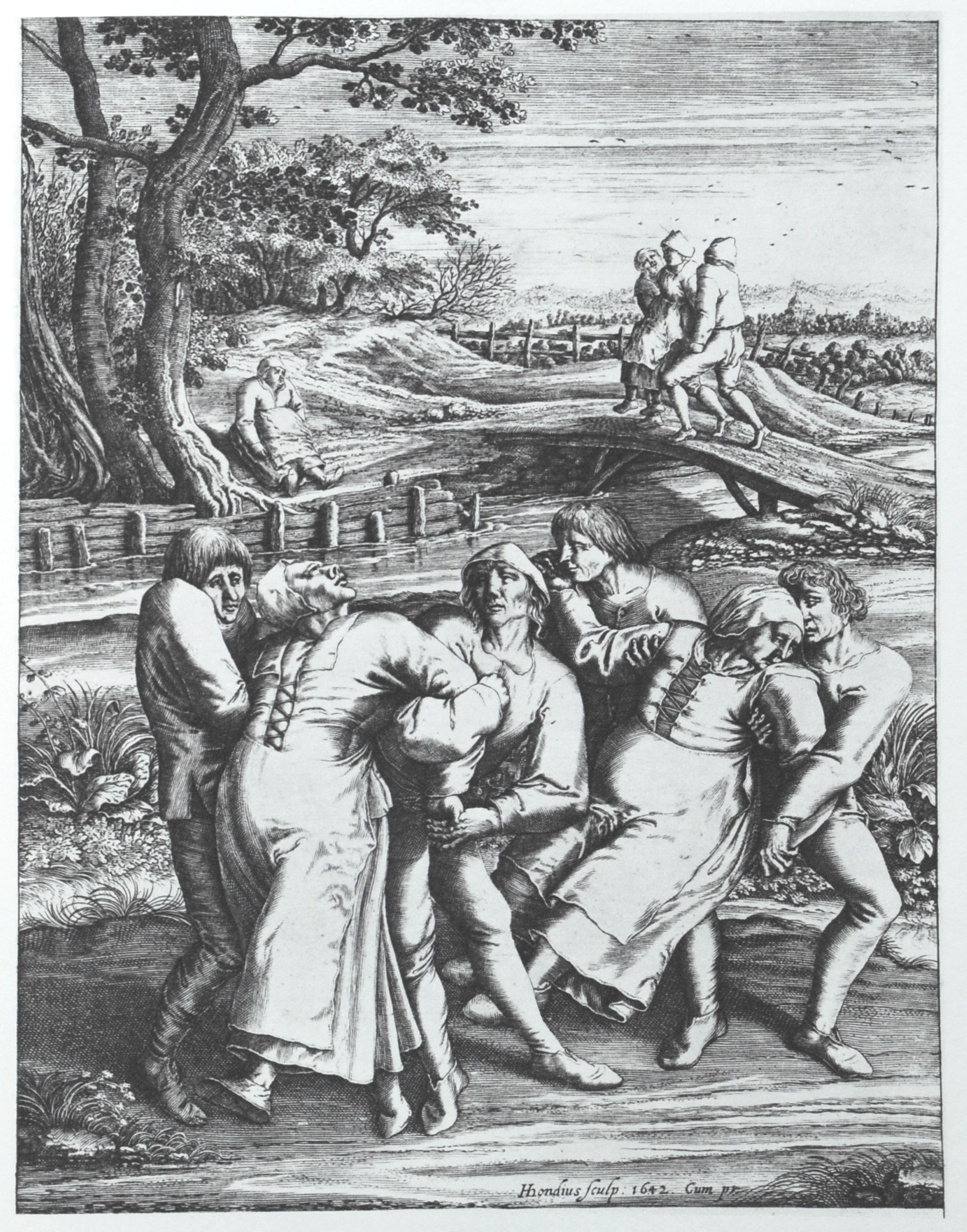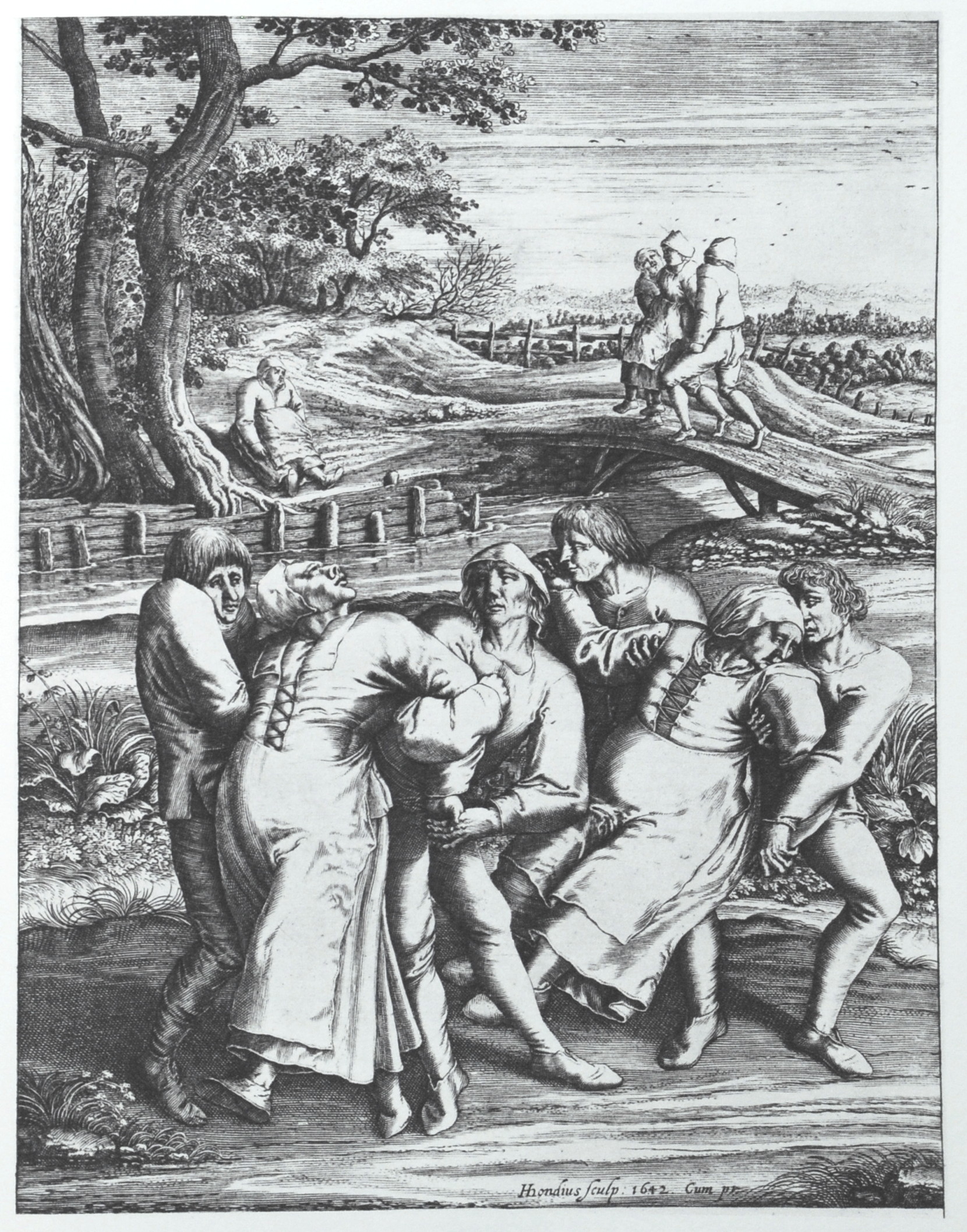A scorching July day in 1518 marked the beginning of one of history’s most bizarre and terrifying events. In the bustling streets of Strasbourg, a woman named Frau Troffea began to dance. Nothing unusual at first glance, but what followed would perplex historians for centuries to come.
Day after day, Frau Troffea continued her relentless dance without rest or reason. Her feet moved to an invisible rhythm that seemed to possess her very soul. More frighteningly, her strange affliction began spreading through the city like wildfire. Within days, dozens of people joined her mysterious dance marathon.

Medieval depiction of the dancing plague. Image credit: Wikipedia
By mid-August, the streets of Strasbourg had transformed into a massive dance floor of horror. Hundreds of people, mostly commoners, found themselves caught in this inexplicable dancing trance. The dancers moved without control, their bodies continuing even as exhaustion set in and their feet became bloodied.
Local authorities, completely baffled by this phenomenon, tried an unusual solution. They built wooden stages and hired musicians, believing that organized dancing might help cure the afflicted. This decision proved catastrophic. The music only encouraged more people to join the deadly dance, with some participants literally dancing themselves to death.

Artistic representation of the dancing plague. Image credit: The Public Domain Review
While medieval minds blamed supernatural forces and Saint Vitus’s curse, modern scientists paint a different picture. Some researchers suggest the bizarre event resulted from mass hysteria, triggered by the extreme stress of famine and poverty plaguing the region. Others point to possible ergot poisoning from contaminated bread, known to cause hallucinations and convulsions.
Yet the true cause remains shrouded in mystery. The dancing plague of 1518 stands as one of history’s most fascinating and terrifying examples of mass hysteria. It serves as a haunting reminder of how collective fear and social stress can manifest in extraordinary and deadly ways. Even today, this peculiar incident continues to captivate researchers and storytellers alike, proving that sometimes truth is indeed stranger than fiction.
References:
What Was the Dancing Plague of 1518? | HISTORY – link
The Dancing Plague of 1518 — The Public Domain Review – link
Dancing plague of 1518 – Wikipedia – link
Categories: Do you know, Historical Mysteries, Mass Hysteria, Medieval History, Unexplained Phenomena
Tags: 1518, Dancing Plague, historical mystery, Mass Hysteria, Medieval History, Strasbourg, Supernatural Events, unexplained phenomena
Religion: Christianity
Country of Origin: France, Holy Roman Empire
Topic: Historical Mystery
Ethnicity: European


